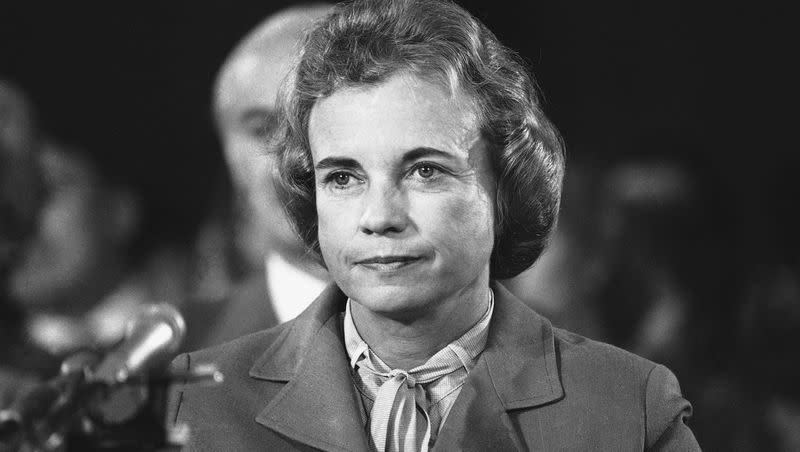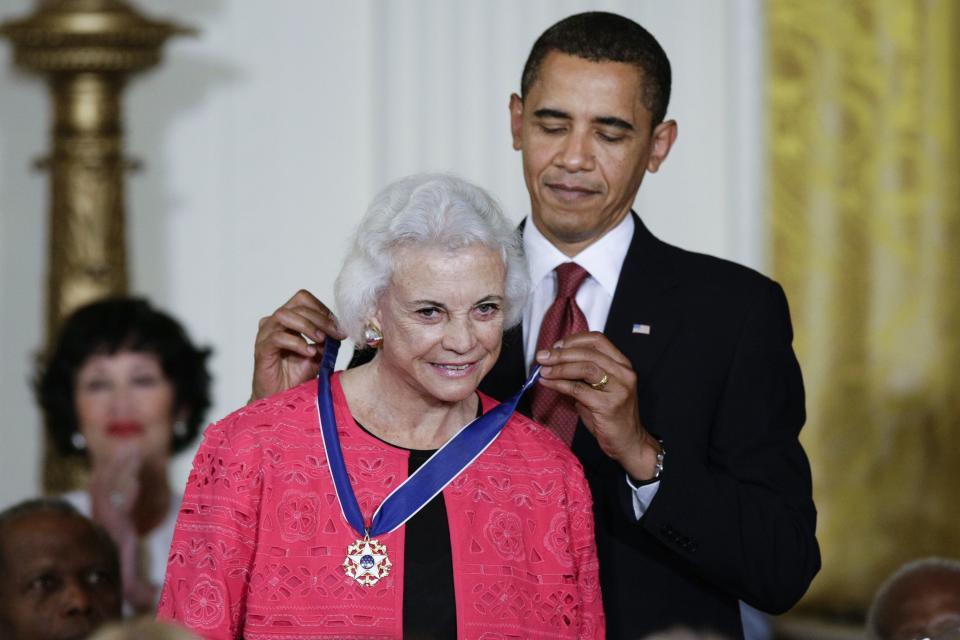Opinion: Sandra Day O’Connor did more than break a gender barrier

She rose to national prominence at a time when America was beginning to become more bitterly partisan than it had been in many decades, yet Sandra Day O’Connor was a competent and effective jurist who did more than just break a gender barrier.
O’Connor, who died Friday at the age of 93, was a great American success story. And she honed the valuable skill of elevating dispassionate analysis over partisanship, while staying true to her values. Advocates and ideologues disliked many of her pivotal rulings, which was a sign she was more committed to legal principles than partisanship.
She remained a strong patriot and stayed true to her homespun and practical, no nonsense Arizona roots. In her farewell statement in 2018, after being diagnosed with the early stages of dementia, she wrote, “How fortunate I feel to be an American. As a young cowgirl from the Arizona desert, I never could have imagined that one day I would become the first woman justice on the U.S. Supreme Court.”
Indeed, young people today may have a hard time understanding what it meant to be born on a remote farm in Arizona in 1930, in terms of societal expectations and the lack of career possibilities. O’Connor learned early to rely on her brains and hard work to escape those limitations. At 16, right after the end of World War II, she gained admission to Stanford, later to be admitted to Stanford Law School.
But unlike her male counterparts, when she graduated with a law degree in 1952, O’Connor had virtually no job opportunities. The only offer she received was to be a secretary at a Los Angeles-based law firm.
She married fellow law student John O’Connor and eventually made legal and political connections that jump-started her career. She was elected to the Arizona Senate, eventually becoming the majority leader. She was elected to a judgeship on the Maricopa County Superior Court, and eventually joined the state Court of Appeals, where she caught the eye of Supreme Court Chief Justice Warren Burger, during his trip to the state in 1979.
Two years later, President Ronald Reagan appointed her to the U.S. Supreme Court.

In a sign of how things have changed over the past 42 years, it’s almost shocking to recall that her appointment was confirmed by a unanimous vote in the Senate. Such a thing would be unthinkable today. It did not mean she would make decisions on the court that would be unanimously accepted, but it is a credit to her character and judicial competence that she remained almost universally respected and venerated in the years after her retirement from the court in 2005.
She helped adjudicate landmark cases involving, among other things, abortion, affirmative action and, perhaps most important of all, the resolution of the disputed 2000 presidential election between Al Gore and George W. Bush.
Despite being appointed by Reagan, she was no lackey for partisans, often infuriating them. But, as any judge, she believed she was following the Constitution, and she remained civil with those who opposed her. She navigated thorny issues with grace and nonpartisan commitment to legal principles.
The Supreme Court’s website quotes O’Connor as saying, “Being a member of the Court is a little like walking through fresh concrete. We look back and see our footprints in those opinions that we’ve written and they tend to harden after us.”
In O’Connor’s case, those footprints loom large, indeed — not so much for the decisions she wrote, but for her groundbreaking precedents on behalf of all women and girls, who now can set their sites and aspirations on becoming part of the nation’s highest court.
It’s one thing to break through a barrier, but quite another to do it in a way that is honorable and venerable. That is O’Connor’s legacy — something that should light the way for all people, regardless of gender.

